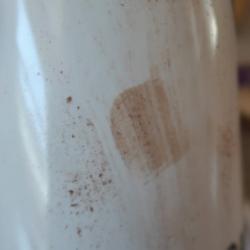Source Institutions
Source Institutions
Add to list Go to activity
Activity link broken? See if it's at the internet archive

In this activity, learners become detectives and use chemistry to investigate fingerprints. Learners explore how oils and sweat on our hands contain charged molecules that attract to charged molecules on surfaces that we touch, leaving behind fingerprints. Using tiny particles from cornstarch or cocoa powder, learners can reveal these prints. A step-by-step instruction guide with pictures, discussion questions, and suggested activity extensions are included. Links to English & Spanish classroom style lessons are listed below.
- Under 5 minutes
- 10 to 30 minutes
- $1 - $5 per student
- Ages 8 - 14
- Activity, Lesson/Lesson Plan
- English, Spanish
Quick Guide
Materials List (per student)
- Lotion (this makes fingerprints easier to see)
- A mug (other hard objects like small mirrors or soda cans work as well)
- A small bowl
- Cocoa powder or cornstarch
- A small, soft paintbrush
- Clear tape (glossy works better than matte)
- Paper (white if using cocoa powder; dark if using cornstarch)
Subjects
-
Physical Sciences
-
Chemistry
- Chemical Bonding
-
Chemistry
Informal Categories
- Crime Science
Other
Components that are part of this resource:
- Full Classroom Style Lesson
- Spanish Handout For Classroom Style Lesson
- Details the story of Henry Faulds, Francis Galton, and Sir William Herschel and the conflicting claims of who was responsible for first using fingerprints as a means of identification.
Access Rights:
- Free access
